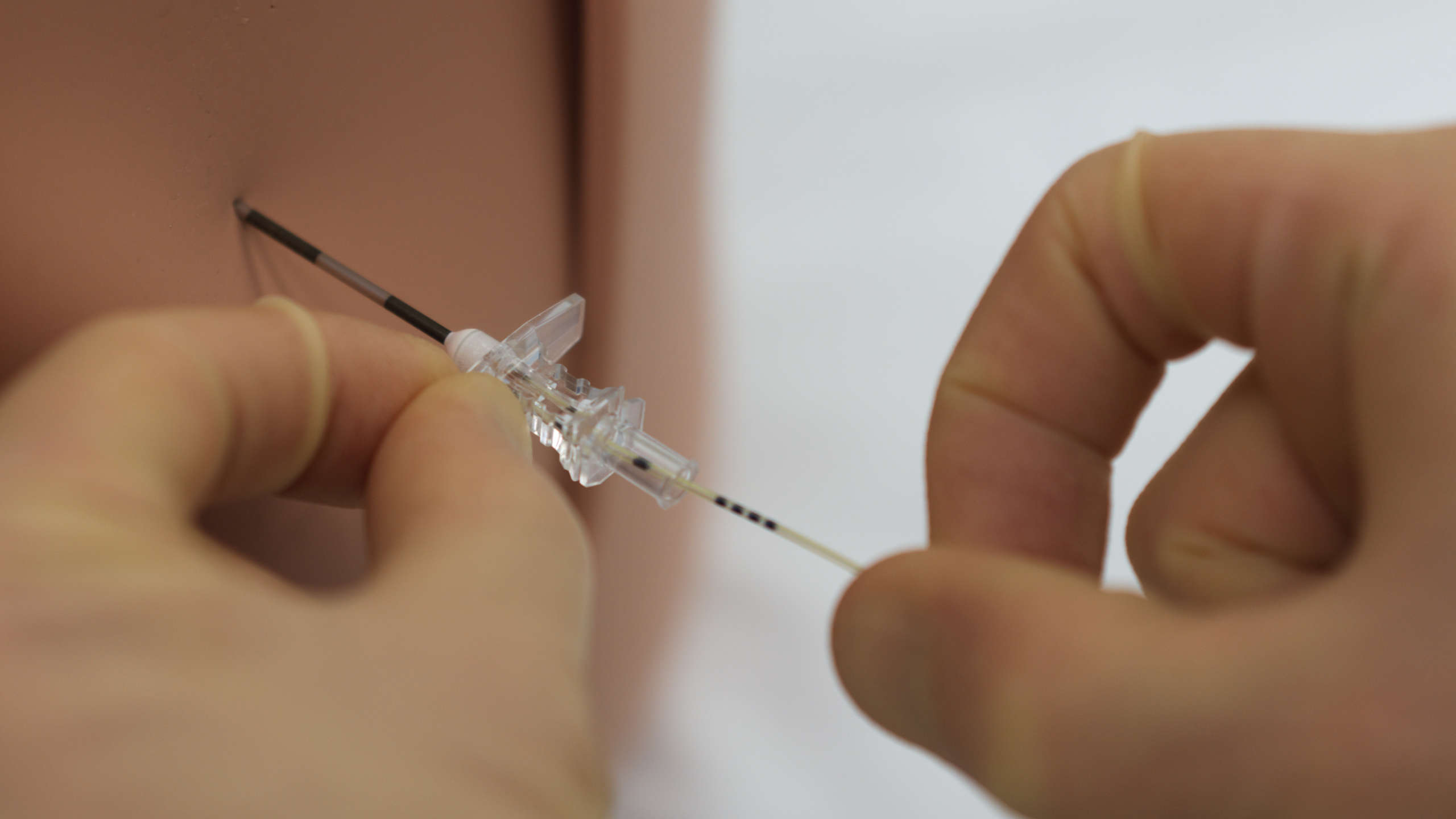
Epidural insertion in a delivery suite room
Obstetric AnaesthesiaUse this resource in conjunction with your real-world training

These films have been created for training purposes with individual roles played by medical professionals and/or mannequins.
No actual patients have been used in the videos.
The processes and the procedures follow the Royal Berkshire NHS Foundation trust guidelines at the time of creation.
Experience Summary
In this 360-degree video, observe an anaesthetist counsel and perform an epidural in a patient in labour.
Clinical Context
Epidural anaesthesia is a commonly used technique for pain relief, particularly during labour and certain surgical procedures involving the lower body. Before proceeding, informed consent must be obtained through clear and empathetic counselling.
The clinician should explain the purpose of the epidural: to provide regional anaesthesia or analgesia by injecting local anaesthetic into the epidural space surrounding the spinal cord. Patients should be told that the procedure can significantly reduce pain while allowing them to remain conscious.
Benefits include effective pain control, reduced need for systemic opioids, and the ability to adjust the level of anaesthesia. Risks and complications must also be discussed, including:
- Common side effects: low blood pressure, difficulty passing urine, patchy or inadequate block.
- Rare complications: spinal headache, nerve damage, infection, bleeding (epidural haematoma), or failed block requiring alternative anaesthesia.
Patients should be advised that they will need to remain still during the procedure, and the block may take 10–20 minutes to become fully effective. Reassurance is key, and questions should be welcomed.
Procedure for Epidural Insertion
- Preparation:
- Confirm identity, consent, and indication for the epidural.
- Review coagulation status and check for contraindications (e.g., infection at insertion site, bleeding disorders, severe hypovolaemia).
- Ensure IV access, full monitoring (ECG, pulse oximetry, blood pressure), and resuscitation equipment are available.
- Confirm identity, consent, and indication for the epidural.
- Positioning:
The patient is placed in a sitting or lateral decubitus position with the back arched outward to open the intervertebral spaces. Good positioning is crucial for success and safety. - Aseptic Technique:
Don sterile gloves, gown, and mask. Clean the skin with antiseptic solution and drape the area to maintain a sterile field. - Local Anaesthetic:
Infiltrate the skin and deeper tissues with local anaesthetic at the intended insertion site, typically between L2–L5 vertebrae. - Epidural Needle Insertion:
Insert a Tuohy needle into the epidural space using the loss-of-resistance technique with air or saline. Once identified, advance a sterile epidural catheter 3–5 cm into the space. - Securing and Testing:
Withdraw the needle, secure the catheter, and administer a test dose to rule out intrathecal or intravascular placement. Monitor for adverse reactions. - Dosing and Monitoring:
Administer the full dose once proper placement is confirmed. Continue to monitor vitals, sensory and motor block level, and patient comfort.
Learning Outcomes
- Observe the procedure of inserting an epidural
- Understand the steps of performing an epidural
- Understand the key safety counselling points for an epidural
External Resources
